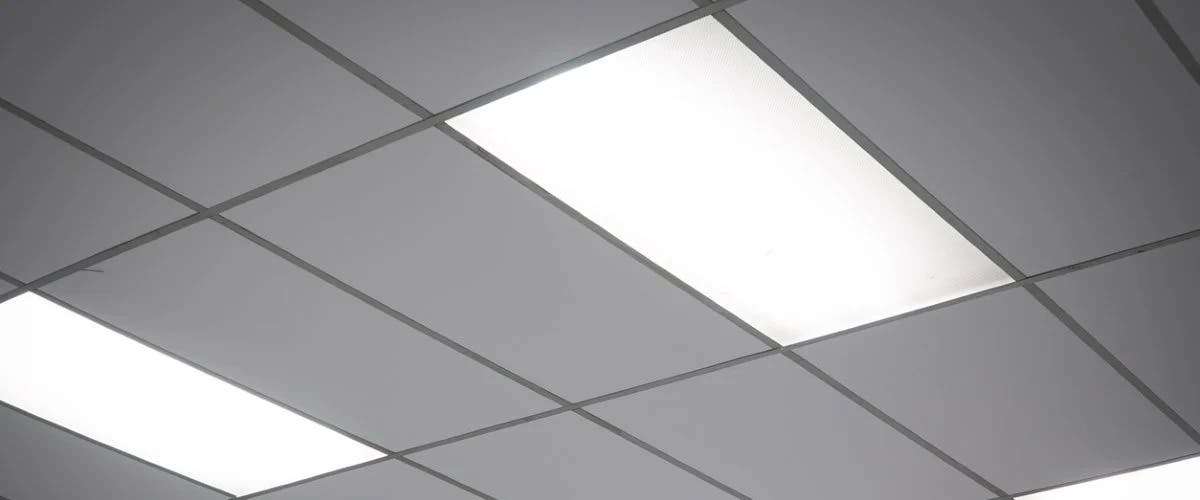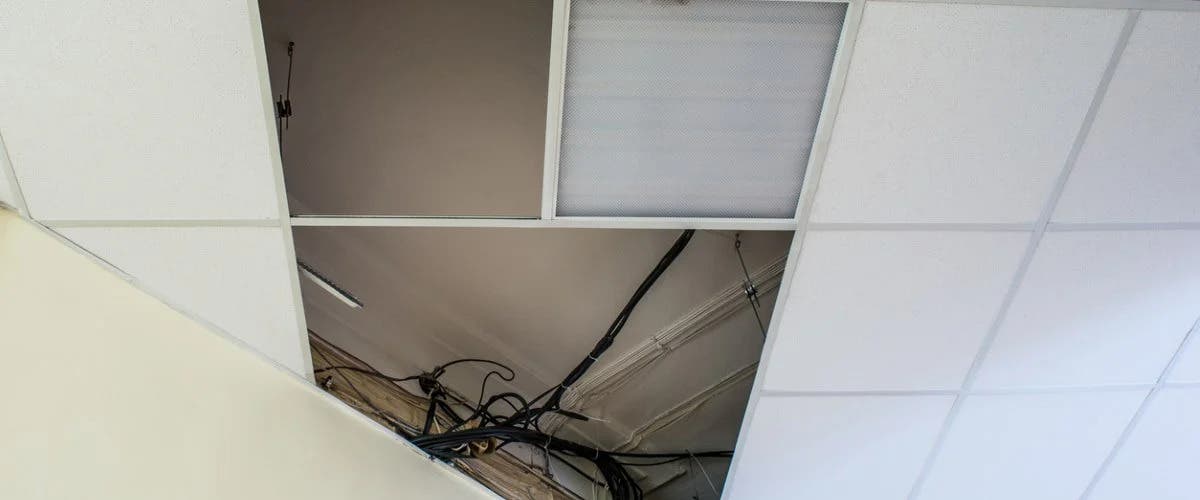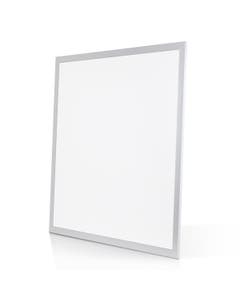Common Problems with LED Panels and How to Fix Them
Related Links
Many of the issues that affect the performance of LED panels are universal to all LEDs, such as flickering, glowing, burnout and buzzing. For detailed information on how to combat these typical problems with LEDs, check out our article How to Stop Your LEDs from Flickering, Buzzing, Glowing and Burning Out.
There are some problems that specifically affect LED panels. The content on this page takes a closer look at these:
Explore Our Range of Led Panel Lights Solutions
Quick LED Panel Problem Detection


If your LED panel is failing and you are not sure of the fault, there is a quick and diagnosis you can do. Try switching on the LED panel and check the table below.
Common LED Problems and Their Likely Causes
Problem |
Likely Cause |
| The LED panel does not illuminate at all | Driver failure |
| The LED panel flashes | Driver failure |
| If only some of the LEDs in the panel are lit | LED failure |
Detecting the problem and the likely cause is only half the battle. In the sections below, you will be able to find the solutions to these problems.
Do you require a panel light?
Problems with LED Drivers and Voltage Conversion
Overview
An LED Driver regulates the amount of power that flows through a lighting system. Drivers convert the AC power from the mains supply to the DC power required to run LED Panels and therefore prevent power surges. LED drivers are small units that are wired to the LED panel. They play a similar role to ballasts in fluorescent lights.
Drivers are vulnerable to overheating. Even drivers that work correctly will be affected by heat over time. However using cheap, low quality drivers or the wrong driver will mean it is at greater risk of overheating sooner.
This is because the current flowing through the system isn’t kept at a constant level, so the excess heat generated impacts the driver’s performance.
Problems


Problems
- If the Voltage from the mains power supply is 240v, a driver converts this to 12v or 24v to run the panel correctly. If the driver isn’t working correctly then it doesn’t convert this current and keeps the voltage at a constant level. This means the bulb will flicker and the system won’t react to overloads which means the panels are at an increased risk of burnout.
- If your LED panel isn’t working at all then the most likely reason for this is faulty internal wiring where the wiring is not connected to the driver correctly.
- Although not technically a fault with the wiring, fitting dimmable LED panels with an incompatible dimmer switch will cause flickering.
Solutions
- Ensure your LED panels are compatible with the circuits, power supply and light switches they are running off.
- Invest in back-lit or central-lit panels (where the LED chips are mounted onto the panel, rather than the edge of the panel), as these panels feature built-in drivers which can help to reduce the problems with drivers outlined above.
- Ask an electrician to check that the wiring in the lighting system is fitted correctly.
In need of a replacement driver for your LED lamp/fixture? Click here to view our full range.
Give us a call on 0113 887 6270 for further advice.
Problems With Low-Quality LEDs


Overview
LED panels are more expensive than traditional fluorescent tubes and for this reason consumers may choose cheap, low quality LEDs and expect the same performance from them as the leading brands. Low quality LED panels often feature inferior components that aren’t tested properly.
LED panels feature a number of components; if any of these components are low quality or faulty it can affect the overall performance of the LED panels.
Problems
- Frame:
- Usually made of aluminium, the frame contains the light within the panel.If the frame is too light or is made of a material other than aluminium (cheap LED panels often feature a plastic frame), then this could create excess heat and increase the risk of burn out from overheating.
- LED chips:
- These chips are mounted to a circuit board and are what produce the light. Depending on the type of panel, they are mounted to the back or sides of the panel.Low quality chips can cause a number of problems including the panel becoming dim or the colour quality being compromised.
- If low quality LED chips are used in a panel this can produce a ‘blue’ hue which can make a room look cold.
- Light guide plate:
- This points the light coming from the LEDs towards the diffuser.If it’s not fitted correctly then this can impact on the amount of light and the angle of the light reaching the diffuser.
- Diffuser:
- This ensures the light coming from the LEDs is evenly distributed and helps to reduce glare.A low quality diffuser, made from acrylic or PMMA rather than polycarbonate, won’t distribute light as evenly.
- Overtime, plastic diffusers can discolour at the edges and turn yellow, reducing the quality of light produced by the LED panel.
- Reflector plate:
- This reflects light back into the light guide plate.
- Issues with the reflector plate can cause glare.
- Heat sink:
- This helps to prevent LED panels from overheating as a conductive metal heat sink takes away excess heat to keep the panel cool.A poor quality heat sink will mean not enough heat is dissipated from the LED chips which can cause the chips to burnout.
- Cheap plastic heat sinks don’t work as effectively as metal heat sinks and can reduce the life expectancy of the LEDs in the panel.
- Back cover:
- An aluminium plate that protects the components.The better the back cover fits the frame, the better the heat dissipation which means the panel is likely to last longer.
Solution: How to Select a Quality LED panel
- Choose a panel that is at least £12 - 30 (or £30 – 50 for higher end). When it comes to LED panels price does indicate quality. Panels under £12 will go yellow, ripple or warp much quicker.
- Avoid panels that only have a two year warranty. They only have a two year warranty because they are not built to last! Good quality panels will last longer than this. Aim for a warranty of 3 years or higher.
- Choose a panel that has a light guide plate made out of acrylic (PMMA) or methyl styrene (MS).
- Choose a panel that is finished with powder coating as opposed to paint.
- Look for a well-constructed frame.
- Choose a trusted brand. There are plenty of them out there, here are just a few of our favourites:
- Bright Source
- Philips
- Osram
- Toshiba
- Speak to the company selling the LEDs and ask them about the quality of the LED panels they sell. A trusted company will be able to offer advice. If the company you’re considering buying from are hard to get in touch with then reconsider yout purchase.
- Look at reviews!
- Replace poor quality panels with better quality panels. Sticking with your existing low quality panels will mean existing problems will continue. High quality LED panels where the drivers, optics and LEDs all work at an optimum level could reduce running costs by 25% compared with lower cost panels.
Quick Buys
Problems With Poor Insulation, Ventilation, and Overheating
Overview
LED Panels must be properly insulated to ensure the heat they produce is dissipated correcting so they don’t overheat.
Quality LED panels are fitted with a heat sink made from a conductive metal (usually aluminium) which transfers excess heat away from the panel. If this heat sink is low quality, poorly fitted or not fitted at all then the excess heat can cause the LED chips in the panel to burn out.
Not all LEDs are suitable to be fitted into enclosed fixtures. Fitting an unsuitable LED into an enclosed fitting can cause it to overheat as the bulb won’t have the appropriate heat sink. This isn’t as much of an issue with LED panels as they are usually designed to fit in enclosed fixtures, however, it’s always worth checking the panels are suitable to be installed into recessed fittings.
Problems
- Poor quality or faulty heat sinks can cause LED panels to overheat and burnout.
- If the LED panel driver is faulty then this can also call the panel to overheat (see problems with drivers and voltage conversion above).
Solution
- Only buy LED panels with a correctly fitted aluminium heat sink. Ensure the panel is designed to be installed into a recessed fitting.
Methyl styrene is the best material to choose for the light guide plate (LGP)
There are a couple of minor indications of quality such as a panel that is finished with powder coating rather than paint and a well-constructed frame however, the real marker of quality comes down to the material used to make the light guide plate.
There are three materials commonly used to make an LGP:
- PMMA
- Polystyrene (PS)
- MS
We recommend choosing an LGP made of MS.
PMMA has the best light transmission and durability but is also the most expensive – it is a high-quality product, but not the most affordable.
PS offers good transmission, but it tends to turn yellow over time due to wear and tear and the effects of heat. It is a well-known issue in the industry and is often why these panels have a warranty of only 2 years. Over time they can also ripple of become warped because they aren’t robust enough to handle normal heat exposure. It is the cheapest option of the three, but we would consider it a low-quality choice.
MS is a combination of PMMA and PS. It provides very good light transmission and is also durable, but at a lower price, is the most cost-effective solution.
Problems With LED Panels Failing Early
Overview
LEDs are incredibly popular because they are known to last much longer than standard halogen or fluorescent bulbs. Some LEDs can last over 15,000 hours, meaning they should last an incredibly long time. This sort of longevity makes LED cost cost-effective and environmentally friendly.
When your LED panel fails early, it means there is a problem.
Problem
- LED panel does not last the expected amount of time.
Solution: Fix High Temperatures
- LEDs run at a much lower temperature than halogen bulbs.
- LEDs do not deal with high temperatures very well.
- Ensure that your LEDs have enough ventilation space (see above for advice).
- Ensure that your panels are not near any sources of intense heat.
- Try to avoid using a mixture of fluorescent and LED panels in a single room.
Solution: Our LED panel recommendations
|
Model |
Wattage |
Colour |
Lumens |
Life Span (hrs) |
|
|
Bright Source 600x600 |
40W |
4000k |
3600lm |
30,000 |
|
|
Bright Source 600x600 |
40w |
6000k |
3600lm |
30,000 |
|
|
Bright Source 600x600 |
40w |
3000k |
3600lm |
30,000 |
|
|
Primalux 600x600 |
36w |
4000k |
3550lm |
30,000 |
|
|
Primalux 600x600 |
36w |
6000k |
3350lm |
30,000 |
|
|
Bright Source 1200x600 |
72w |
Selectable |
6500lm |
30,000 |
Related Content
You can find out more about what LED panels are and how they work with our Guide to LED Panels.
For more information on dimmable LEDs read our guide here.
To find out more about problems with LEDs in general read our guide on How to Stop Your LEDs from Flickering, Buzzing, Glowing and Burning Out.
Why Shop With Lampshoponline?
|
USPs |
LampShopOnline |
|
Top Brands Only |
We only stock the best brands on the market and bring these to you at great prices with bulk discounts available for trade and larger home orders. |
|
Quantity |
Purchase as many or as few as you wish with savings when you buy in bulk. Amazon for example may require you to buy in bulk which may not be practical given the wide range of colour temperature, IP rating and beam angle differences around the home. |
|
Stock Availability |
We carry large stocks at all times. |
|
Delivery & Returns |
£3.32 delivery. Free delivery over £65. 30-day returns policy. |
|
Reviews |
We have over 10,000 customer reviews and are rated Excellent. 90% of our customers recommend us. |
|
Great Location |
Our warehouse and entire customer service team is located in Yorkshire. |
|
Packaging |
We are renowned for our excellence in product packing meaning your bulbs arrive in perfect condition. |
|
Great Shopping Experience |
We invest heavily in our shopping experience. We constantly ask for feedback from our customers to help us improve our store experience. |
|
Choose How to Pay |
We accept Credit & Debit Cards, Paypal, American Express and Amazon Pay. |
|
Trade Account Terms |
We offer specific trade accounts for larger clients. |
|
Industry Experts |
Our team are highly trained specialists and can answer most lighting questions. |
Delivery & Returns
Delivery
- Orders above £65 - free delivery.
- Bulk purchasing options apply to many products listed in our GU10 ranges.
- Royal Mail Tracked 2nd Class - £3.32 + VAT
- Royal Mail Tracked 1st Class - £4.99 + VAT
- Orders with items over 2ft long have a mandatory cost of £7.49 + VAT (Unless the value is over £65.00 + Vat).
Returns
If you're not happy with your purchase you can return items to us within 30 days of receiving your order providing the goods are unused. To return your items, please e-mail sales@lampshoponline.com with your order number and we will send a returns number and return instructions to you.
Customer Service
LampShopOnline take pride in looking after our customers and endeavor to reply to every query. It can take up to 48 hours for a reply, however we typically respond within a couple of hours Monday to Fridays.
CONTACT US DIRECTLY AT
Tel: 0113 8876270


















